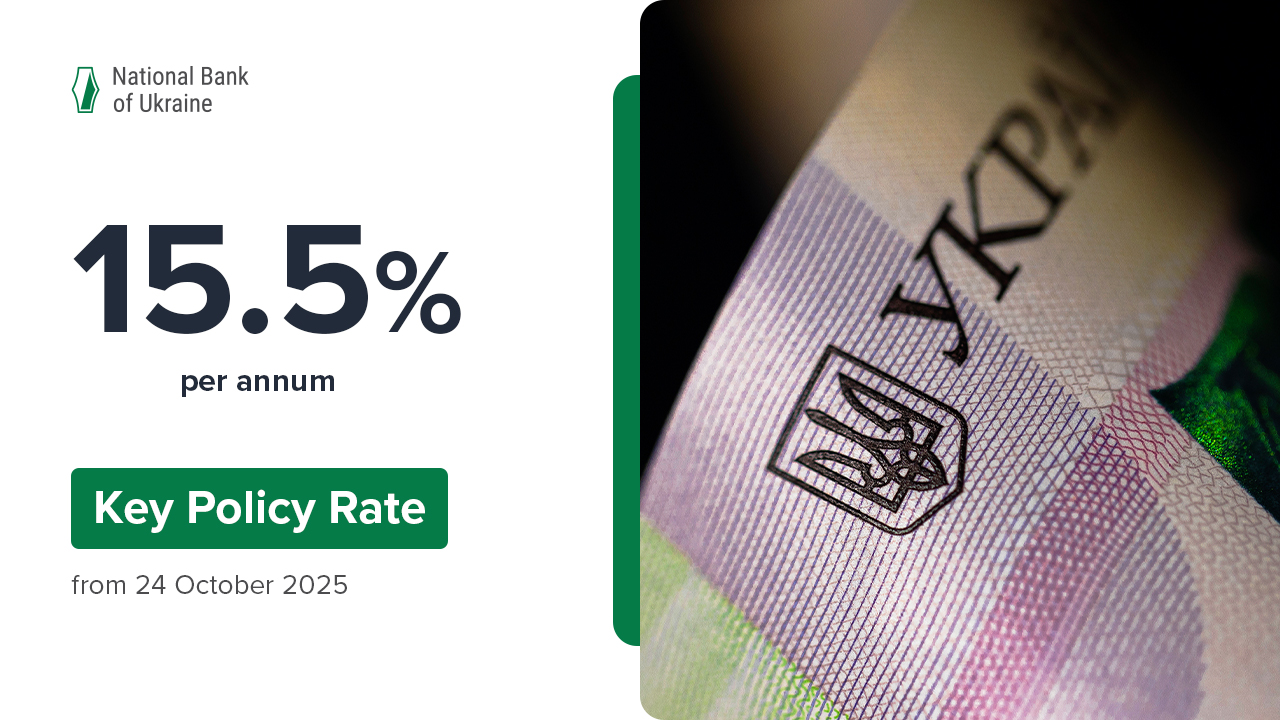The National Bank of Ukraine held a roundtable discussion involving external experts to discuss the NBU’s updated macroeconomic forecasts. During the event, NBU Deputy Governor Mr Dmytro Solohub and Director of the Monetary Policy and Economic Analysis Department Mr Serhii Nikolaichuk discussed the outlook for Ukraine's economy over 2017-2018, described in the latest quarterly Inflation Report (January 2017), with participants.
The National Bank of Ukraine revised its 2017 inflation forecast upwards, from 8% to 9.1%, while leaving its 2018 inflation projections unchanged at 6%. As before, the inflation forecasts remain within the announced target bands (8% ±2 pp for 2017 and 6% ±2 pp for 2018). Also, the NBU expects GDP growth to accelerate, to 2.8% in 2017 and 3.0% in 2018, respectively. The upward revision of inflation and real GDP growth forecasts for 2017 was prompted by the government’s decision to raise the minimum wage to UAH 3,200 (see below).
In addition to the updated macroeconomic forecasts, NBU representatives presented a range of special topics covered in the Inflation Report (January 2017):
Маcroeconomic consequences of the minimum wage increase to UAH 3,200:
According to NBU estimates, nominal wages will rise on average by 23% (45% for low-paid employees) as a result of the twofold increase in the minimum wage effective January 2017.
According to NBU estimates, the effects from a rise in the incomes of the most vulnerable households will outweigh other effects. Accordingly, disinflation will proceed at a slower pace than previously expected.
Employment in Ukraine:
The results of a selective survey of households conducted since 2015 to assess economic activity suggest that the number of employed population exceeded 16 million people, while the employment rate stood at around 57%. Most of the employed population (three-fourths of the total number) was employed in the formal sector of the economy.
Over the past decade, the share of informal employment in overall employment has been increasing gradually, having accelerated significantly since 2014. The acceleration can be attributed not only to the economic crisis but also to intensive migration of working-age people.
Estimates of inflation projections:
In 2016, actual year-end inflation stood at 12.4%, which was close to the NBU's forecast of 12% published at the beginning of the year. However, contributions of inflation components deviate from projections. The largest contribution to the difference between actual inflation and the forecast was made by administered prices (3.1 pp). However, this positive contribution was offset by effects from a high supply of raw foods (-0.8 pp) and a more prudent monetary policy stance than projected at the beginning of the year (-1.0 pp).
Alternative approaches to core CPI calculation:
In all countries with inflation-targeting regimes, the central banks set the headline inflation targets and report to the public on their achievement. At the same time, when analyzing inflation developments and making monetary policy decisions, the central banks rely not only on the Consumer Price Index (CPI) but also on other measures of inflation, in particular, core inflation, which offers a better picture of fundamental price trends.
Therefore, the NBU began to use alternative indicators of core inflation along with the measures of overall and core CPI (based on the exclusion method) in the inflation analysis.
Key parameters of the State Budget of Ukraine for 2017
The government’s initiative to double the minimum wage was central to defining the parameters of the State Budget of Ukraine for 2017. However, according to NBU estimates, the overall effect on public finances is expected to be close to neutral. Higher budget expenditures on compensations of public sector employees will be compensated for by higher tax revenues, including those from social security contributions. Also, certain optimization of expenditures is expected, including due to further revision of the parameters of the utility-related social assistance programs and improvements in the financial position of the Pension Fund.
Ukraine’s balance of payments current account: key trends observed over the past decade:
In 2016, the current account deficit widened to 3.6% of GDP due to higher investments and a decline in savings. On one hand, a recovery in investment demand was observed, mainly in the agricultural sector. On the other hand, consumption increased, including consumption of imported goods.
The widening of the current account deficit is yet further evidence that the government is faced with a difficult choice: how to encourage investment inflows to promote economic growth over the medium term while facilitating an increase in savings to prevent excessive shortages. In addition, such policy should be supported by continued prudent monetary and fiscal policies.
Segmentation of the interbank credit market:
The 2007-2009 global financial crisis and Ukraine's political crisis at the beginning of 2014 had a significant impact on the domestic interbank credit market, in particular by undermining trust between its participants. Currently, only 15 banks maintain credit lines with each other, with FX swaps becoming the dominant instrument in the domestic overnight credit market. Four distinct groups of banks emerged in the interbank credit market. PrivatBank, intermediary banks, State-owned and foreign banks, as well as the remaining banks (medium-sized and small domestic banks).
Shift of focuses in economic stimulation: from monetary to fiscal support
The U.S. is expected shift its focus from monetary to fiscal stimulus to support economic growth. Higher inflation, increased upward pressure on interest rates, and significant currency appreciation are the consequences of a shift toward fiscal stimuli for the U.S. Accordingly, this might reduce the attractiveness of EM financial assets and increase depreciation pressures on EM currencies.
The recent decision on the transfer of CB PrivatBank PJSC to State ownership and the recovery measures already implemented will help reduce the segmentation of the interbank credit market and ensure its operation based on the conventional market model under conditions of a liquidity surplus.
The estimation of the effects of the minimum wage increase, lending recovery, opportunities to stimulate economic growth, and the impact of State participation in PrivatBank PJSC capital on macroeconomic indicators were among the issues that prompted intense discussions after the presentation.
Please follow the link to view a presentation on the Inflation Report (January 2017) delivered at the roundtable discussion.







